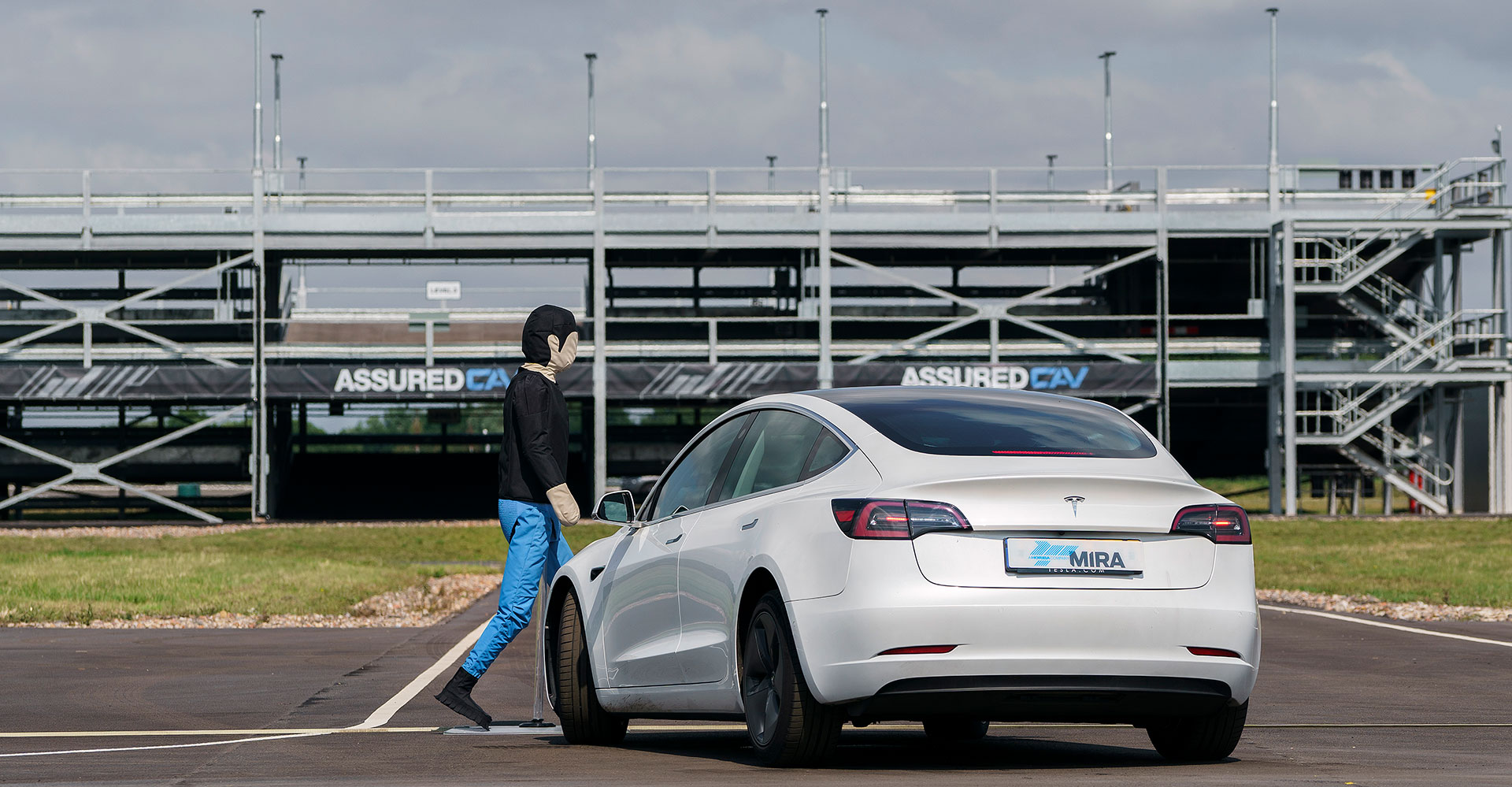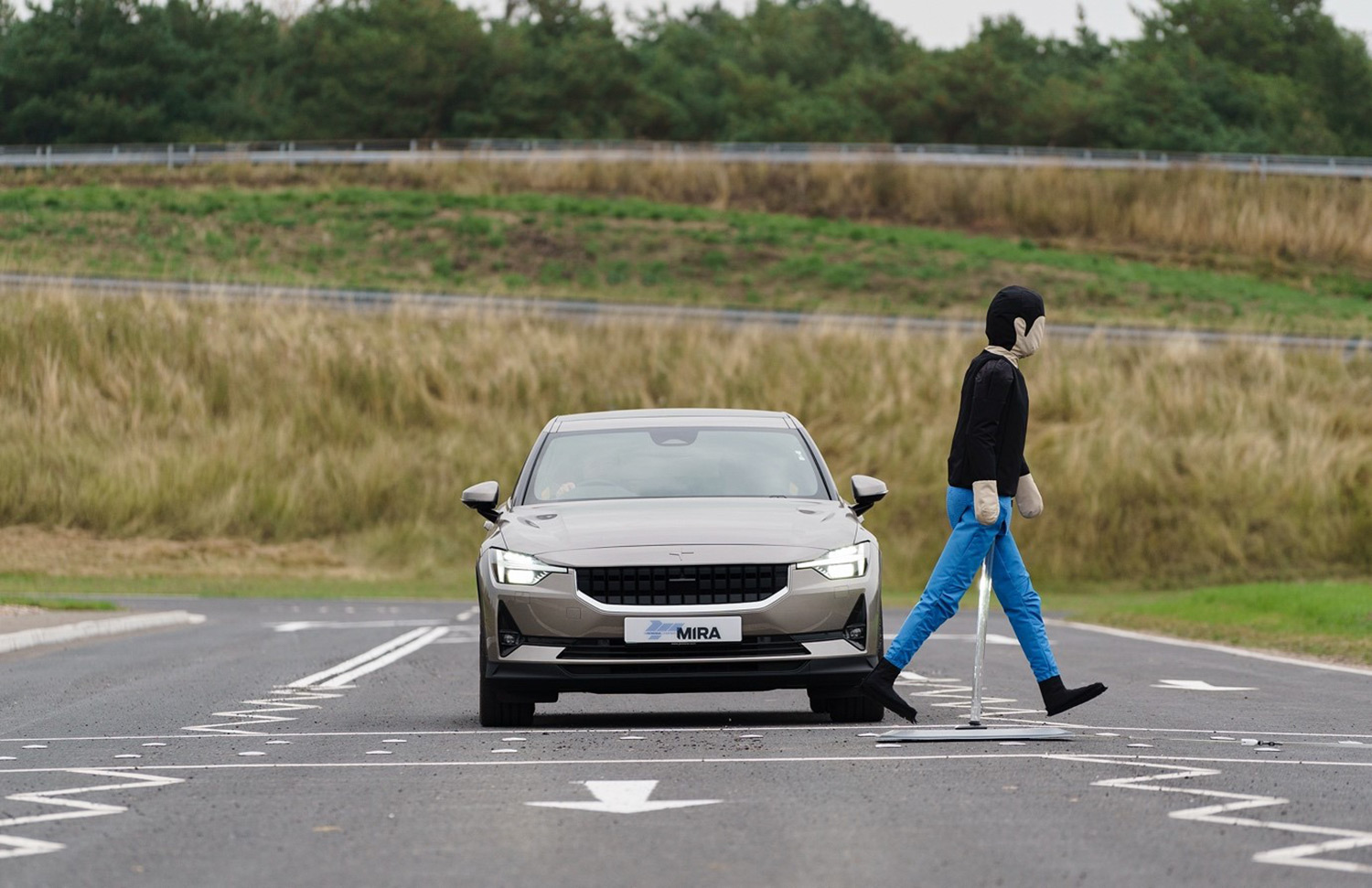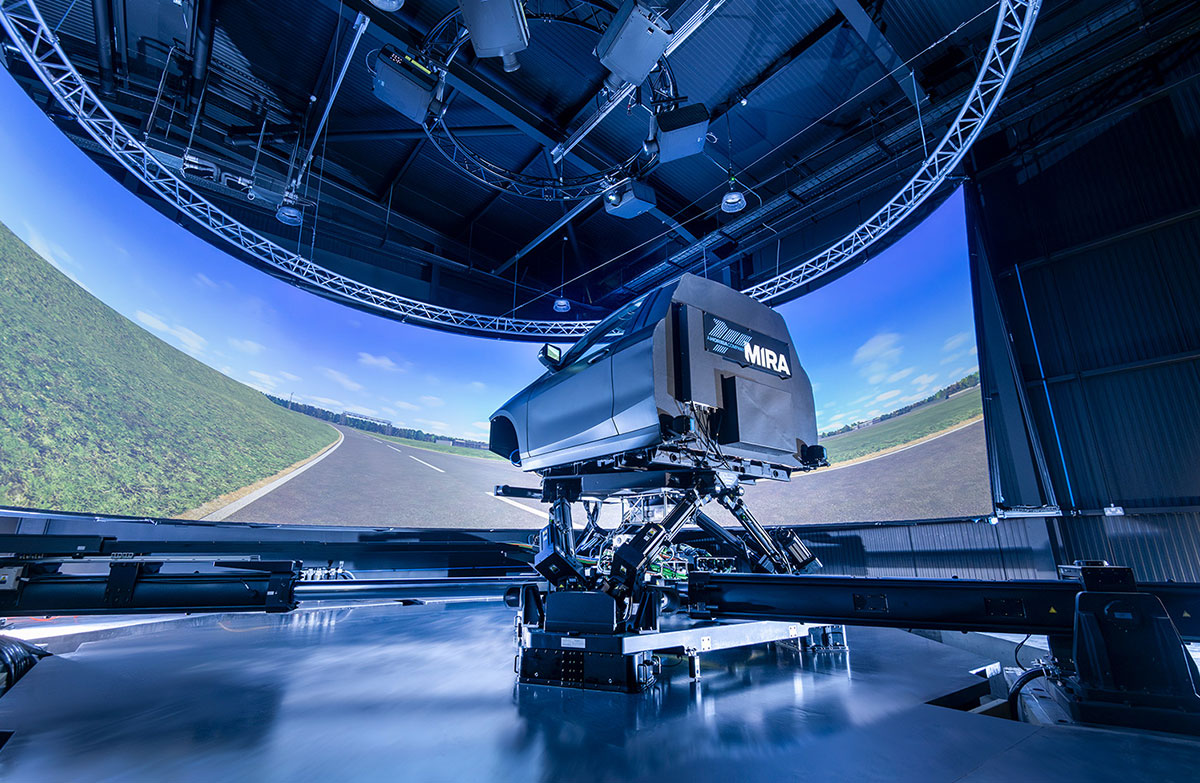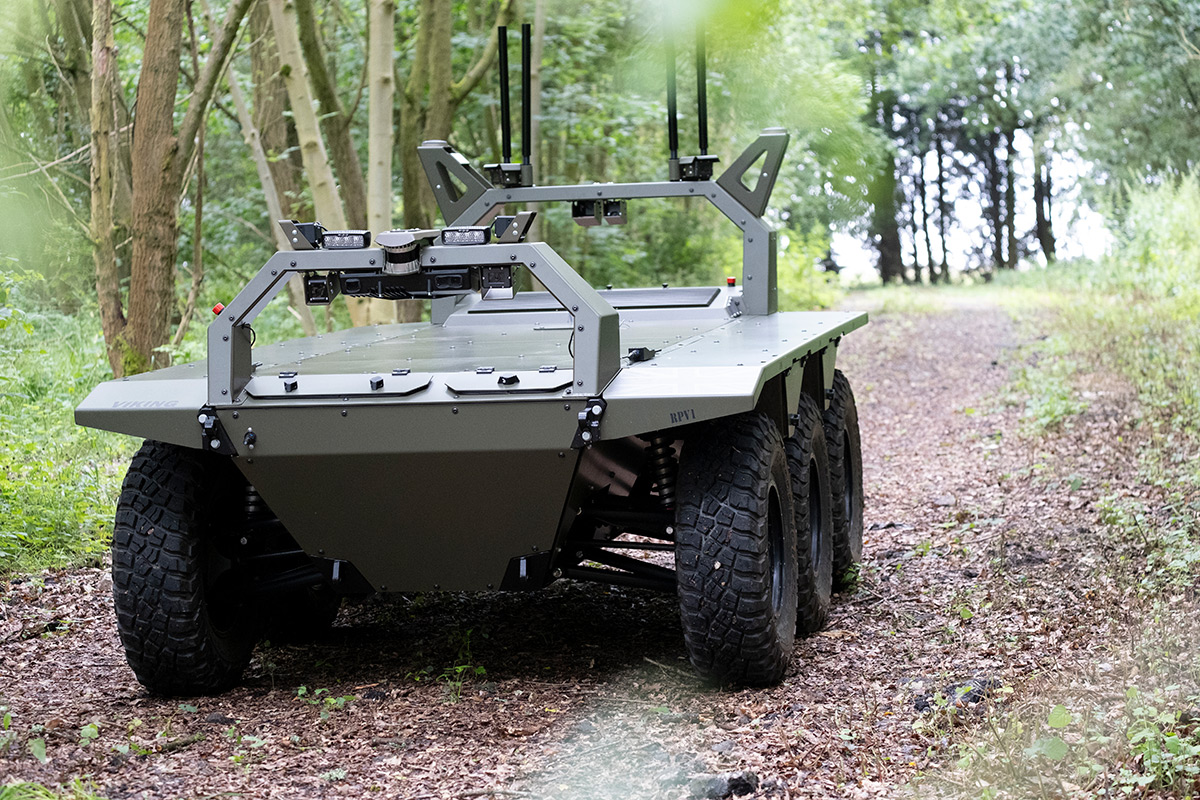As smart cities continue to gain momentum, the speed and standard at which driverless vehicles – and the supporting infrastructure – are developed and deployed will be one of the tests for making the world’s leading cities fit for future mobility. As such, the need for the automotive industry and infrastructure providers to work closely together has never been more critical in making connected and automated mobility (CAM) a reality, says Rob Capaldi, Commercial Manager for connected and autonomous vehicles (CAV) at HORIBA MIRA.
Smart city initiatives are developing at a rapid pace around the world in a bid to improve every aspect of our lives – from how our power and water supply networks make use of smart metering, to incorporating the Internet of Everything into waste management systems, schools, and hospitals.
Within this vision of smarter and connected cities, there’s no doubt of the key role mobility will play – the concept of CAM considers the movement of people and how to improve every component of a journey by connecting autonomous vehicles with the enabling infrastructure.
The UK government has set in place plans to be a frontrunner in the development and commercialisation of CAVs. It aims to have CAVs on the roads by 2021(1) and it’s not hard to understand why – it’s estimated the UK market for connected and automated vehicles will be worth £52bn by 2035 (2).
But it’s not just the UK’s ambition; governments around the world have committed to increasing the number of journeys made by self-driving vehicles in order to improve safety, reduce the cost of transportation and increase the efficiency of mobility.
This global shift in mobility presents both challenges and opportunities for industry. It’s clear that in order to keep pace with this evolution, a collaborative approach is required.
Collaboration is Key
The implementation of self-driving technology represents a multi-sector challenge, requiring seamless interaction between infrastructure and vehicles. This was highlighted by Zenzic in the UK Connected and Automated Mobility Roadmap to 2030.
The roadmap sets out realistic targets to achieve widespread CAV adoption and states that collaboration between the public and private sector is the only way to make this a reality. It further reveals that if all the activity in the roadmap is carried out in silos and without a coordinated approach, it would take until 2079 for the UK to benefit from self-driving vehicles on the roads.
When it comes to collaboration, our extensive work in the development, verification and validation of CAVs has raised one pressing issue; the need for greater communication and partnerships with those that are developing the vehicles of the future – the automotive manufacturers and suppliers – and those that are managing the infrastructure for such vehicles to be deployed upon – often highways agencies, city planners and civil engineers.
Undeniably, the greater communication between these two sectors is vital not only in minimising the length of time it takes to deploy the first generation of publicly road-worthy CAVs but also in terms of sharing best practice and developing a joint framework that ensures such vehicles meet the highest standard of safety.
Policy and Regulation
To enable self-driving and reap the rewards it will inevitably bring, infrastructure providers must ensure they have a forward-thinking policy and regulatory framework that promotes and accommodates trials of CAV technology.
The UK is already a world leader in this area, in 2019 having updated their Code of Practice for automated vehicle trialling. The updates make it easier for OEMs and other technology firms working in this area to carry out on-road trials. The code of practice has been created to support and facilitate the safe development and introduction of CAV technologies to the UK’s roads, speeding up the public acceptance of CAVs.
Let’s Hit the Road
As the test and trial of automated vehicle technologies reaches record levels, the need has never been more vital to ensure connected and autonomous vehicles are safe, functionally correct and secure.
Many deployments of self-driving shuttles on public roads have been in relatively limited, geo-fenced locations where the experience that’s delivered is pleasant and convenient but ultimately rather limited.
To truly understand and benchmark the capabilities of CAVs, infrastructure authorities must accommodate and encourage further trials and testing in busy urban environments, as well as on streets where multiple user types are not segregated.
With many cities around the world already piloting their own set of CAV trials, developing a best practice approach to trialling that can be replicated anywhere in the world, and which includes a range of complex driving scenarios, is essential. Indeed, before embarking on real-world public road trials, which are inherently complex, it’s important to consider independent safety assessments by clearly defining trial and deployment functional and safety requirements.
Furthermore, when it comes to testing and trialling activity, we cannot overlook the major role that simulation now plays. Highly automated vehicles capable of completing an entire end-to-end journey will require billions of miles of validation before deployment on the roads, a way to achieve this will be through the combination of virtual and physical testing. Developing physical and virtual testbeds for autonomous vehicles should be an essential priority for the automotive industry and infrastructure providers alike.
Go with the Communication Flow
As already mentioned, infrastructure providers must work closely with the automotive industry to ensure that the roads, highways and wider environment are being developed to adequately support autonomous mobility.
Almost every automotive manufacturer, taxi service providers and many tech start-ups have entered the self-driving arena over the last decade, meaning untold advances and technology innovation by many are progressing independent of infrastructure upgrades. Many are developing their autonomous vehicles based on sensing technology such as LIDAR, radar and cameras.
Meanwhile, many predict that autonomous vehicles will eventually be able to navigate safely down the road, avoiding hazards while path-planning to minimise congestion using data provided by the local authorities.
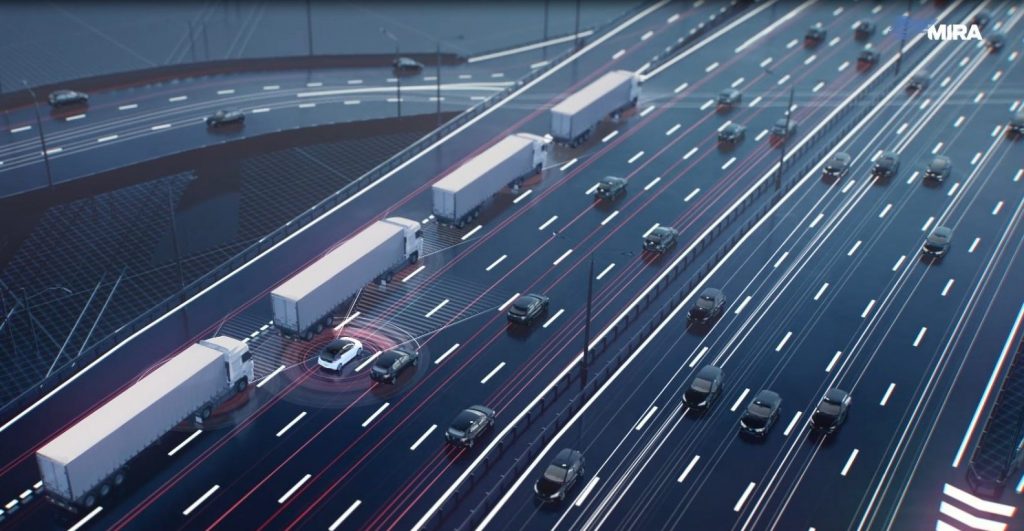
The data is likely to be collected by advanced vehicle to infrastructure communication systems with individual vehicles viewed as ‘data points’ within the road network and from advanced vehicle monitoring systems.
While sensing data will certainly have its place, in a highly connected city, the hope is that it will be used in conjunction with powerful communications technology where the vehicle will eventually be able to connect and learn from other vehicles.
To successfully progress this level of connectivity and interaction between vehicles and infrastructure, the automotive industry needs to consider the communication technology, while the infrastructure sector must make clear how transport infrastructure will align with emerging vehicle technologies.
In practical terms, it may be a case of automakers testing and trialling CAVs using simulation that includes the latest upgrades to communications and physical infrastructure while for the infrastructure sector, simulation can ensure any trialling activity is strategic in the context of what impact it will have on CAVs.
Making Waves on Smart Cities
Amid predictions that spending on smart cities will reach £151.5bn by 2023(2), there is no doubt that advanced mobility projects will represent a large portion of this, bringing clear benefits to society through advances in personal mobility.
To truly take advantage of this opportunity, new ways of working for both the infrastructure and automotive sectors will be required, with an increasing need to come together with a more coordinated approach if connected and autonomous mobility is to become a reality.
As a global provider of pioneering engineering, research and test services, HORIBA MIRA has extensive experience working with the infrastructure and automotive industries in many leading projects in the CAM field. These include creating roadmaps, consulting on quality and safety regulations, providing guidance on infrastructure requirements as well as conducting physical and simulated trials.

A TALE OF TWO SMART CITIES
There are already some strong real-world case studies where collaboration between infrastructure and the automotive sector is working, with significant input from HORIBA MIRA. November 2018 saw the successful completion of the UK Connected Intelligent Transport Environment (UK CITE) project, a 30-month government and industry co-investment to create an advanced environment for testing connected and autonomous vehicles on the public roads.
It involved equipping over 40 miles of urban roads, dual-carriageways and strategic highways in Coventry and Warwickshire (M40, M42, A45 and A46) with combinations of three vehicle to infrastructure communications methods, and track testing for a fourth, known as LTE-V. The project set out to establish how these communications technologies on public roads can improve journeys, reduce traffic congestion, and provide entertainment and safety services through better connectivity.
UK Autodrive was another ground-breaking three-year collaboration that explored the use of infrastructure and autonomous and semi-autonomous technology on public roads in Coventry and Milton Keynes. As well as developing self-driving technology, UK Autodrive, which completed at the end of 2018, set out to explore the use of car-to-car and car-to-infrastructure communications in order to understand the impact of CAV technology on public acceptance and perception of the technology. It also looked to gather an understanding of legislative and insurance implications.
1 http://new.whatmobile.net/driverless-cars-will-be-on-uk-roads-by-2021/
2 https://www.bbc.co.uk/news/technology-47144449
3 https://www.governmenteuropa.eu/smart-city-spending/93835/

